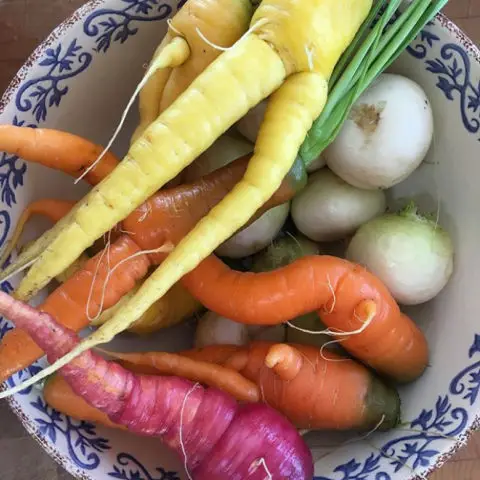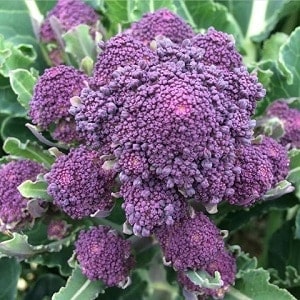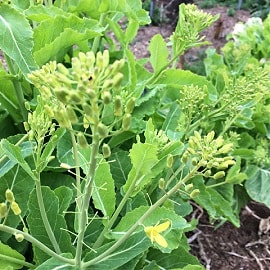Key Secrets For Eating Seasonally
Key Secrets For Eating Seasonally. With a few simple strategies for seasonal eating and growing seasonal food, you can eat fresh vegetables all year round. Although, in places where you have deep snow for most of the winter, that’s going to be a lot harder to achieve!
My book, The Seasoned Gardener, celebrates the seasonal harvests with ideas, hints and tips throughout for using and preserving the harvest. I show you how I enjoy the harvest fresh and in season, as well as storing food for a later date.
Substitutions
My first tip is to think about substituting. Replace foods that you would normally eat with a meal for something that is actually available as fresh produce. For example, during winter we really like soups and stews and things like shepherd’s pie and they’re topped with a layer of mashed potatoes. Or even something like sausage and mash. Anything where we would use mashed potato, can be changed. Instead of using potatoes, you could use a vegetable that will sit in the ground all winter.
Alternatives for seasonal eating
To make the most of eating seasonally, instead of potatoes we use parsnips, rutabaga (swede), celeriac and carrots. Parsnips are better after a frost, so we start using them after our first frost in mid to late November. In a temperate climate, parsnips happily sit in the ground for the whole winter. One of the other root vegetables that we’ve discovered for our family this year, is root parsley. Sown in spring and we used the leaves as parsley for the summer and in autumn, we used the roots. They are small, white roots and they’ve got a mild parsley flavor, but to be honest by the time they’re cooked, it’s not an overwhelming flavor, it’s just the light pleasant taste. We’ve had them in soups, stews and used them has an alternative to mashed potato.
No dig harvesting of root vegetables

A really useful tip that I saw on YouTube, is how to harvest your no dig vegetables. Push down on the root veg and that releases them and then they will easily lift up out of the ground. Now I’ve got to say this doesn’t work all the time and it doesn’t work on the really big, gnarly parsnips, but on smaller ones or where they’re straight, it works really well.
Sowing times for seasonal food
For the last couple of years is pushing the boundaries in terms of sowing times. Most seed packets give you a guide of approximate times when they can be sown. I’m sowing a little bit later in the year at the end of the season. The hope is that plants will overwinter and provide an early harvest in the spring. The beets that I put in late summer, early autumn, were harvested as golf ball-sized. They were a beetroot Cylindra. It is a long thin beetroot. A couple added to a tray of mixed vegetables, or soup, will be a welcome addition to our diet. I aim to grow a broader range of vegetables that we can eat during the year.
Plan for the Hungry Gap
The period when winter vegetables are almost finished and new season vegetables are not ready is called the ‘hungry gap’.
And those are the times that we rely more and more on our stored food. But there are still some vegetables in the garden that we could eat to ensure we are still eating seasonally. For example, we grow purple sprouting broccoli. One of the things that I love about it is that the more you pick it, the more it comes, and only if you leave it too long, will start going to seed. So it’s one of those little and often vegetables. You can also eat the young leaves like a kale or a cabbage.

Extend the growing season
In an effort to bridge that hungry gap, I’ve been looking at ways to extend the growing season. This way we can eat seasonally for a longer period for each fresh vegetable. You can try planting seeds a bit later than they say, in the hope that the plants will grow a little bit and then give us an early crop of baby vegetables.
Another way is to grow under cover. But if you’re not as fortunate as me and you don’t have a greenhouse or a polytunnel, there are ways to do that in the garden. And it really doesn’t matter whether you have great big growing beds like I do or a very small space or even a windowsill or a window box. There are still ways that you can prepare the soil and get your plants growing sooner. You can create a mini greenhouse or a cloche over the soil to warm it up. The video below shows a simple and cost effective way to make a cloche tunnel.
Only grow what you actually eat
My next tip to make the most of seasonal food is to only grow what you like to eat. There’s absolutely no point in growing things just because you like to grow them if you want to be self-sufficient in your food. I grow Asturian Tree Cabbage, which I really like the taste of. It’s cabbagey but it’s really mild, it’s very fresh, I even like that the colour is so bright on our plate. I don’t grow a huge amount of it because we actually have quite a lot of brassicas to choose from, but a bit is very nice.

Asturian Tree Cabbage is a fairly short-lived perennial, ours in its third year, it has started going to seed and it’s started flowering, so I’m breaking the flower heads off and we can eat those like you would a broccoli. This will help to prevent it going to seed. If it goes to seed, it may not grow ag
We also grow Chard, now I am not a huge fan of chard and so having just said grow what you like to eat, this seems to counter what I’ve just said. But I do like the young leaves in salads and I also like the stems chopped up and roasted. So I take off the older leaves and they go to the chickens, the smaller leaves go to the kitchen – none of it gets wasted.
How do you know whether you like something or not?
Well, the only thing you can do is grow it and give it a go and try it and if you like it, like we did with a Hamburg Parsley, where we just grew a small amount in 2019. We know we like it, so we’ll be growing much more in 2020. If you don’t like it, you could swap it, barter, with other friends and gardeners who might grow something that you don’t have and then you can give them your ‘whatever it is that you aren’t very keen on’ and they might have something they’re not very keen on or something that they just have a glut of.
Further reading and information about eating seasonally
Make the Most of your Vegetables
Can we ever be truly self sufficient?
- Bulbs for summer and autumn - July 4, 2025
- Showstopper flowers in early summer - June 20, 2025
- Best flowering variegated plants - June 13, 2025
